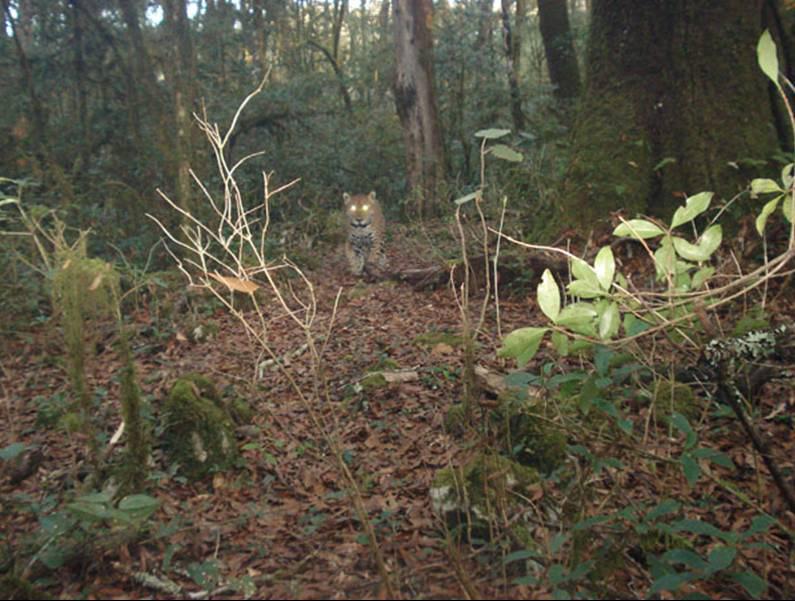Ines Arroyo-Quiroz & Ramon Perez-Gil Salcido
This project, including research and the development of conservation actions, attempts to give a balanced review of the interactions between humans and wildlife (primarily terrestrial vertebrates) within the Sierra Gorda Biosphere Reserve in Queretaro, Mexico, in order to detect current and potential conflicts and identify strategies to address those conflicts.

Juvenile jaguar captured on February 2007 in the region of La Joya del Hielo, Sierra Gorda Biosphere Reserve, Querétaro, México.
The current status of wildlife in the Sierra Gorda Biosphere Reserve and its conservation challenges can be best understood in the context of its historical association with people. The area’s mosaic of geophysical and climatic features explains the great variety of vegetation types and species richness and also accounts for the high dispersion of the human population within the Reserve. This has resulted in various conflicts between wildlife and people, such as the hunting of mountain lions, jaguars and coyote because of their perceived threat to livestock. To conserve the wildlife of the Reserve, there is a need for a clear understanding of these conflicts and for the development of innovate solutions. Hence, following preliminary fieldwork with GESGIAP, we propose this initial project.
Our specific objectives are:
1. Give an overview of the human-wildlife interactions;
2. Determine the present range of human-wildlife interactions (positive and negative, highlighting their relevance and relative importance);
3. Determine the current and potential human-wildlife conflicts;
4. Investigate previous / present conflict mitigation strategies for such conflicts in the area;
5. Assist both GESGIAP and Reserve’s Authorities in the identification of constraints and opportunities to address said conflicts with innovative strategies.
We consider it imperative to find strategies to minimize the negative human-wildlife interactions and maximize the positive interactions (sustainable use among them). This project will help provide a greater understanding of the use, values and importance of wildlife in the region and render more tools for conservation. It will contribute to sustainable mutual interaction where neither humans nor wildlife have an adverse impact upon the other.